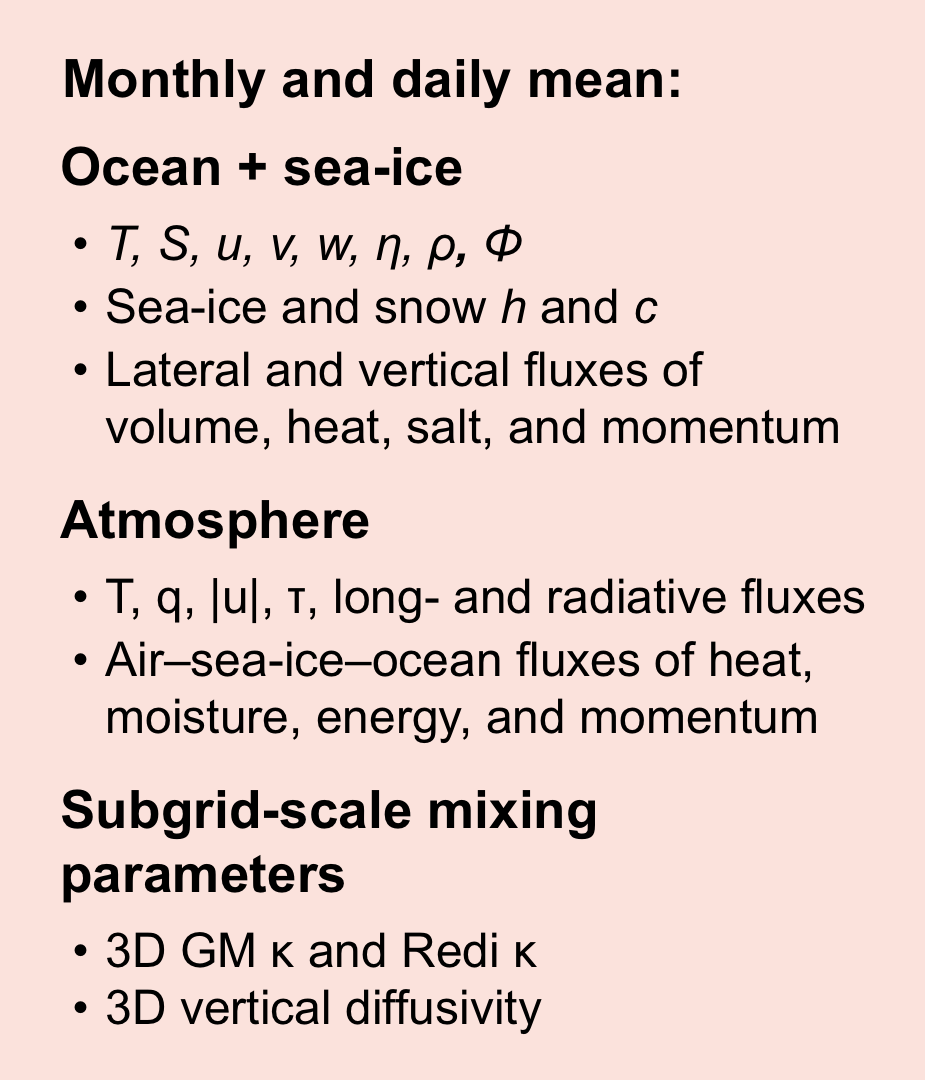Analysis Tools
A major ECCO goal is enabling the community to reproduce our model output or solution. All code is completely open source, shareable and reproducible; although it isn’t necessary to reproduce the simulation on your own machine.
We provide many of the fields as monthly means and daily means. These come in two forms: (1) Gridded by 0.5-deg latitude / longitude; and (2) Output as realized by the numerical model. The latter is essential for closed budget calculations (e.g., heat, volume, or salt); however, it can be tricky to work with since the spherical earth has been decomposed into a number of curvilinear tiles. Thus, we provide tools to make it easier to work with this decomposition of the surface.






